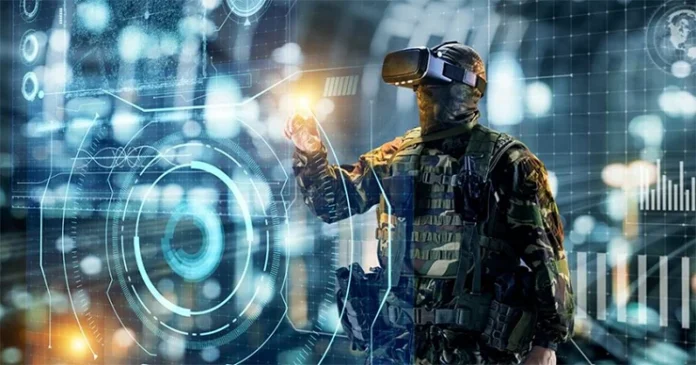‘Aatmanirbharta’ or autarky is a unique idea, denoting the ability to produce commodities largely on one’s own, with less reliance on external help. It has gained popularity in India’s economic and defence trajectory over the past decade. However, aatmanirbharta is distinct from import substitution; it signifies achieving economic self-sufficiency without completely rejecting external assistance, maintaining a balance between self-sufficiency and cooperation.
No nation-state can become fully autarkic due to resource, human capital, or financial limitations. Thus, maintaining a delicate balance is crucial.
Understanding India’s transformational journey towards self-reliance in the critical field of defence is essential, especially as the nation approaches its Independence Day celebrations.
Advancements in Firearms
The Indian armed forces have evolved from outdated Lee Enfield rifles to advanced Kalashnikov assault rifles, with the AK-203 being a shining example of the Made in India story through technology transfer. The Kalashnikov plays a vital role in the Indian infantry’s firepower potential. The AK-203 is now in its most advanced stage, with joint manufacturing planned with Russia in a significant deal at Uttar Pradesh’s Amethi. This underscores not only the strong Indo-Russia ties but also India’s growing prowess.
Vikrant – the Beast Incarnate
India was once seen as a frivolous contender in global politics, despite its historical naval empires like Cholas and Maratha under Chhatrapati Shivaji Maharaj. In the 1960s and 1970s, the Indian Navy was slowly transforming. INS Vikrant symbolized India’s growing naval presence, but vested interests halted the aatmanirbhar drive. However, since 2015, the Indian Navy has made significant progress, acquiring ships and building frigates, patrol vessels, and destroyers using its capabilities. INS Kolkata, INS Rajput, and INS Arihant are examples of India’s aatmanibhar success story. The rechristened INS Vikrant stands out as a strategic naval asset, a brand-new aircraft carrier with over 70 percent indigenous content, becoming a template for carrier strike forces and ensuring freedom of navigation in the Indo-Pacific and Indian Ocean Region. It serves as a deterrent to rivals like China and Pakistan, preserving India’s monopoly in the region.
Cyber superpower
India owes its progress in cyberspace and information technology to former Prime Ministers Jawaharlal Nehru, Rajiv Gandhi, and PV Narasimha Rao. Nehru emphasised building a scientific base for modernisation, evident in institutions like the Indian Institutes of Technology (IITs) and the Indian Institute of Science (IISc) established during his time. Today, India’s scientific prowess is being spearheaded by these institutions, particularly evident in the realm of cyberspace and Information Technology. The Rajiv Gandhi government’s 7th five-year plan marked a significant leap in embracing computers and their transformative potential, a momentum maintained by PV Narasimha Rao in his 9th five-year plan and the New Industrial Policy of 1991.
Building on these policy initiatives, India has emerged as a cyber-superpower and a global leader in artificial intelligence, especially in defence applications. India is exploring the development of autonomous weapon systems and intelligent robots. The nation is also actively pursuing the creation of advanced weapons like AI-driven hunter-killer drones and fighter jets.
However, aatmanirbharta should encompass defensive capabilities as well. The cyber-attack on India’s premier hospital, AIIMS New Delhi, exposed vulnerabilities in the nation’s cyberspace infrastructure. Strengthening India’s defensive capabilities in cyberspace requires integration of aatmanirbharta with a pragmatic approach that seeks help from other countries, particularly from leaders in the field such as Israel. Such assistance should be pursued under specific terms and conditions, particularly through technology transfer, to maintain the indigenous nature of India’s cyberspace program.
Protecting the Skies and Land
A landmark deal signed during Prime Minister Narendra Modi’s recent visit to the US involves General Electric building the F414 engine for the Tejas MK-II aircraft in collaboration with Hindustan Aeronautics Limited, with 80 per cent mixed content of foreign and indigenous materials.
In the domain of defence, India’s progress has been remarkable. From procuring foreign fighter jets like the Hunter and tanks like T72 in the past, the nation has now developed its lethal 4++ generation fighter jet, Tejas MK-I, garnering interest from foreign countries. A landmark deal signed during Prime Minister Narendra Modi’s recent visit to the US involves General Electric building the F414 engine for the Tejas MK-II aircraft in collaboration with Hindustan Aeronautics Limited, with 80 per cent mixed content of foreign and indigenous materials.
India’s missile program, pioneered by the late scientist-intellectual Dr APJ Abdul Kalam, exemplifies the nation’s capabilities. The Prithvi and Agni series of missiles demonstrate India’s offensive and defensive nuclear capabilities, adhering to a no-first-use nuclear policy.
Fortifying the Defence Sector
Bolstering India’s defence sector is a priority for the government. Fiscal year 2022-2023 saw the highest ever defence exports of Rs 16,000 crore, a sign of India’s rising strength in the league of major powers with robust hard power. The Modi government’s efforts are propelling India into the league of big powers with strong hard power. The nation is on the path to establishing an Indian military-industrial complex, further enhancing its defence capabilities.
The Path Forward
The way to aatmanirbharta may encounter obstacles and foreign interference, but India must remain determined to achieve its goals, guided by Swami Vivekananda’s words: “Arise, Awake, and stop not till the goal is reached.” India’s relentless pursuit of self-reliance in defence and technology exemplifies the nation’s determination to stand strong on the world stage.
References
- https://indianexpress.com/article/explained/ins-vikrant-indigenous-aircraft-carrier-features-weapons-equipment-8112603/
- https://www.iitsystem.ac.in/history
- https://www.drishtiias.com/to-the-points/paper3/five-year-plans#:~:text=Seventh%20Five%20Year%20Plan%20(1985%2D90)&text=It%20laid%20stress%20on%20improving,employment%20by%20providing%20Social%20Justice.
- https://indianexpress.com/article/explained/ges-f414-jet-engine-lca-tejas-boeing-super-hornet-8678400/
- https://m.timesofindia.com/india/defence-exports-at-rs-16000cr-an-all-time-high-says-rajnath-singh/articleshow/99178959.cms
–The writer is currently working as a Research Associate at Defence Research and Studies (dras.in) and is a columnist. The views expressed are personal and do not necessarily reflect the views of Raksha Anirveda
–The writer is currently working as a Research Associate at Defence Research and Studies (dras.in) and is a columnist. The views expressed are personal and do not necessarily reflect the views of Raksha Anirveda














